Search Result
Results for "
copolymer
" in MedChemExpress (MCE) Product Catalog:
13
Biochemical Assay Reagents
| Cat. No. |
Product Name |
Target |
Research Areas |
Chemical Structure |
-
- HY-131960
-
|
Polysucrose 400
|
Biochemical Assay Reagents
|
Others
|
|
Sucrose-epichlorohydrin copolymer acts as a macromolecular crowder and promotes protein liquid-liquid phase separation (LLPS) .
|
-
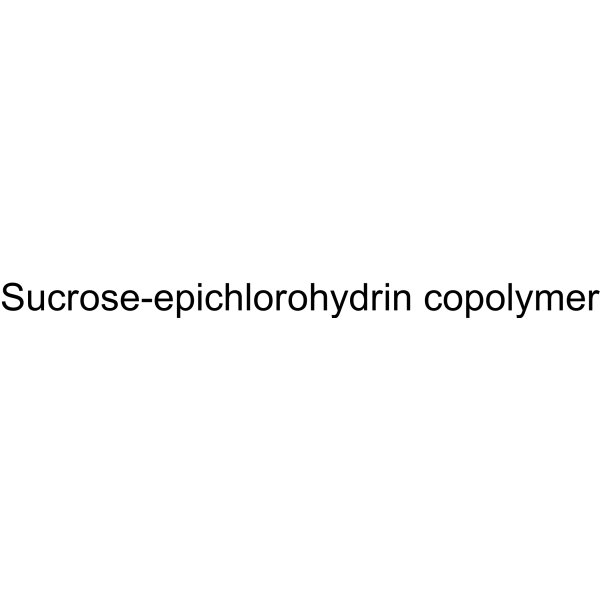
-
- HY-W250126
-
|
Poly(ethylene-co-vinyl acetate)
|
Biochemical Assay Reagents
|
Others
|
|
Ethylene-vinyl acetate copolymer is a biochemical reagent that can be used as a biological material or organic compound for life science related research.
|
-
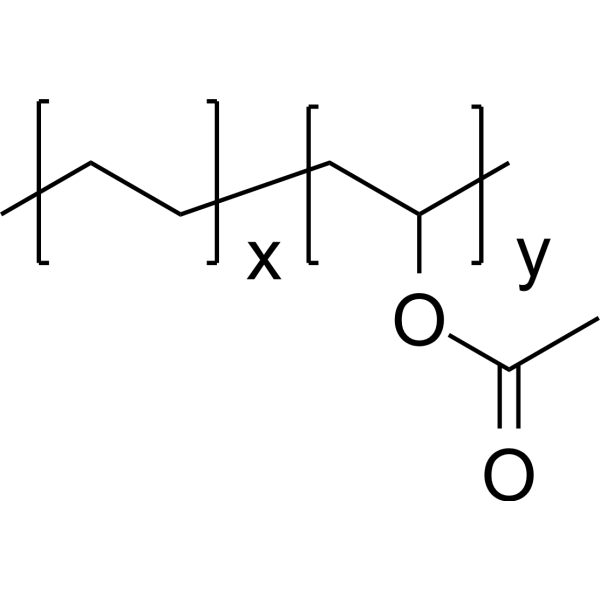
-
- HY-158083
-
|
|
Biochemical Assay Reagents
|
Others
|
|
Polymethacrylate Copolymer forms nanodiscs spontaneously by fragmentation or solubilization of the lipid bilayers.Polymethacrylate Copolymer is used in designing of nanodisc-forming polymer to mimic the amphiphilic nature of proteins and peptides .
|
-
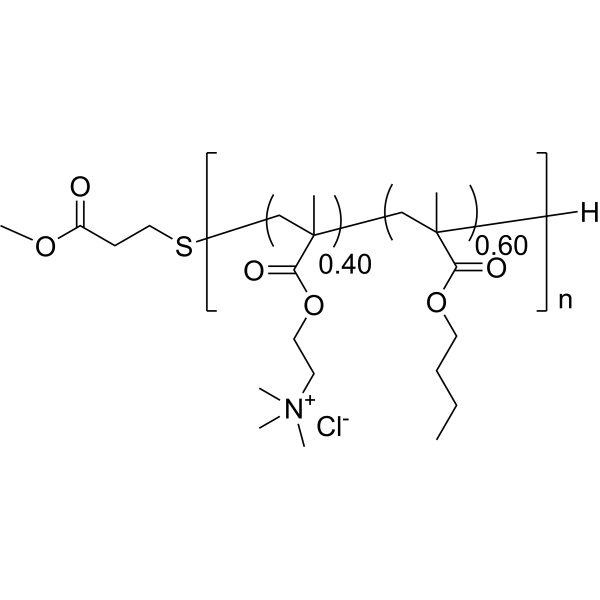
-
- HY-W250721E
-
|
Carboxy polymethylene (copolymer)
|
Biochemical Assay Reagents
|
Others
|
|
Carbomer copolymer can be used as an excipient, such as Bioadhesives, emulsifiers, release modifiers, suspending agents, tablet binders, viscosity enhancers, etc. Pharmaceutical excipients, or pharmaceutical auxiliaries, refer to other chemical substances used in the pharmaceutical process other than pharmaceutical ingredients. Pharmaceutical excipients generally refer to inactive ingredients in pharmaceutical preparations, which can improve the stability, solubility and processability of pharmaceutical preparations. Pharmaceutical excipients also affect the absorption, distribution, metabolism, and elimination (ADME) processes of co-administered drugs .
|
-
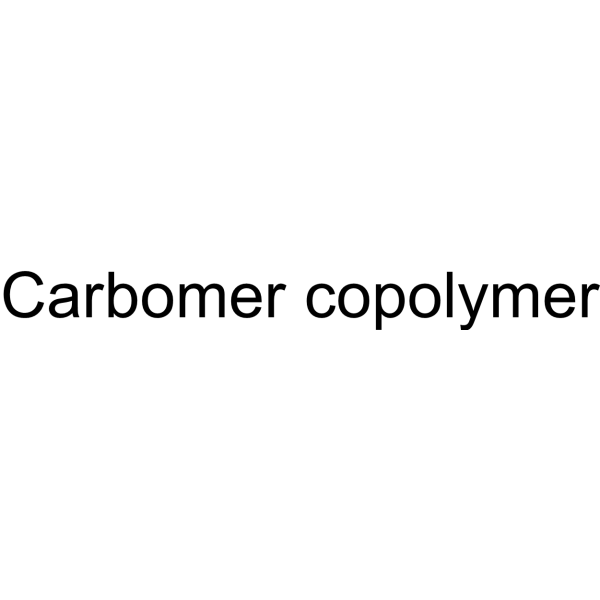
-
- HY-27979
-
|
|
Biochemical Assay Reagents
|
Others
|
|
Ethyl acrylate-methyl methacrylate copolymer can be used as an excipient, such as sustained-release coating materials, matrix sustained-release tablet binders and retarders. Pharmaceutical excipients, or pharmaceutical auxiliaries, refer to other chemical substances used in the pharmaceutical process other than pharmaceutical ingredients. Pharmaceutical excipients generally refer to inactive ingredients in pharmaceutical preparations, which can improve the stability, solubility and processability of pharmaceutical preparations. Pharmaceutical excipients also affect the absorption, distribution, metabolism, and elimination (ADME) processes of co-administered drugs .
|
-

-
- HY-139818
-
|
|
Biochemical Assay Reagents
|
Others
|
|
Mal-PEG-PLA (PEG MW 3000 & PLA MW 70,000) is a block copolymer, which can be used to preparenanoparticles and micelles for targeted drug delivery .
|
-
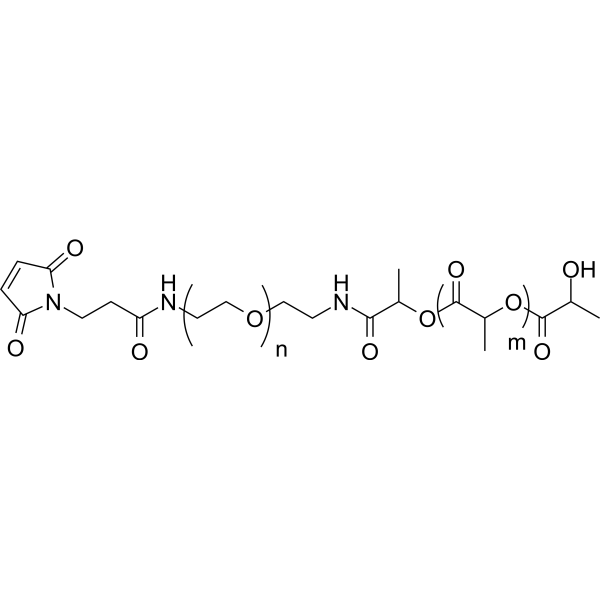
-
- HY-139819
-
|
|
Biochemical Assay Reagents
|
Others
|
|
MPEG-PLA (PEG MW 3000 & PLA MW 50,000) is a block copolymer, which can be used to preparenanoparticles for targeted drug delivery .
|
-
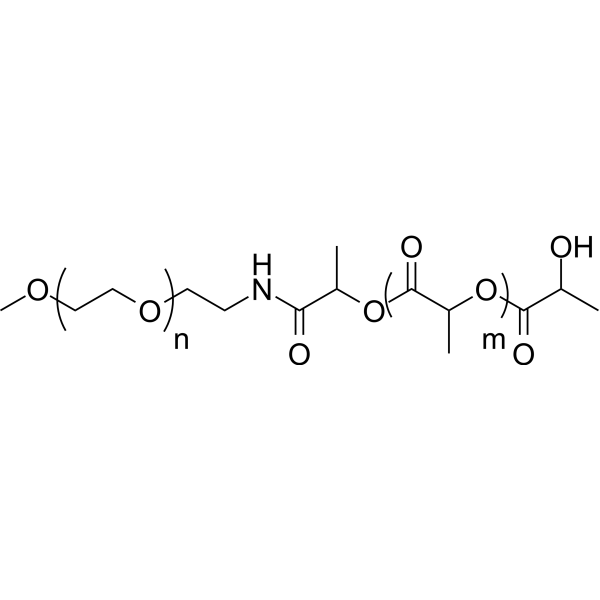
-
- HY-W077028
-
|
|
Others
|
Others
|
|
N-(2-Hydroxypropyl)methacrylamide is used to synthesize copolymers for the targeted delivery of antileishmanial agents in Visceral leishmaniasis (VL) .
|
-

-
- HY-N7701E
-
|
|
Fungal
|
Infection
|
|
L-Diguluronic acid disodium is a linear polysaccharide copolymer composed of two L-guluronic acid. L-Diguluronic acid disodium can be used to form Alginate. L-Diguluronic acid disodium is a generic name of unbranched polyanionic polysaccharides and it can be used for the research of antifungal agents delivery carries .
|
-

-
- HY-N7701B
-
|
|
Others
|
Infection
|
|
L-Tetraguluronic acid is a linear polysaccharide copolymer composed of four L-guluronic acid (G) .
|
-
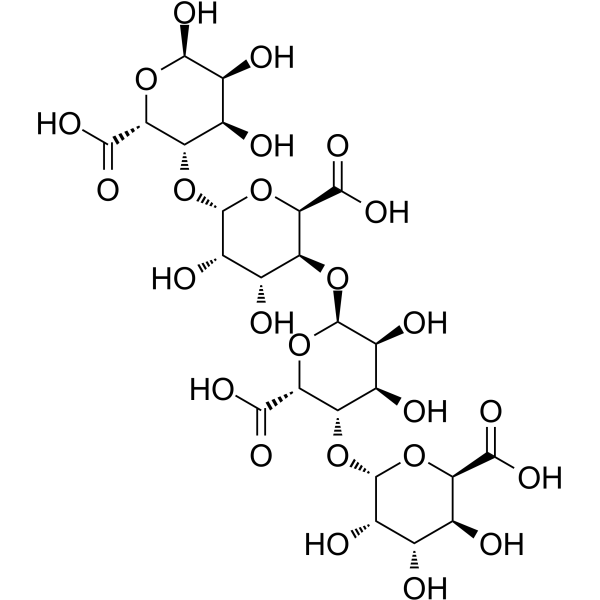
-
- HY-N7701C
-
|
|
Others
|
Infection
|
|
L-Pentaguluronic acid is a linear polysaccharide copolymer composed of four L-guluronic acid (G) .
|
-

-
- HY-N7701D
-
|
|
Others
|
Infection
|
|
L-Hexaguluronic acid is a linear polysaccharide copolymer composed of six L-guluronic acid (G) .
|
-
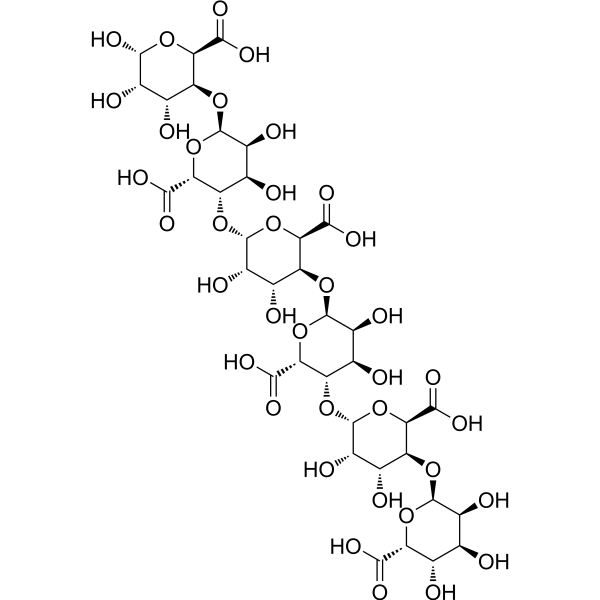
-
- HY-155902B
-
|
Maleimide-PEG-Hydroxy (MW 1000)
|
Biochemical Assay Reagents
|
Others
|
|
Mal-PEG-OH (MW 1000) was used as a macroinitiator to obtain amphiphilic diblock copolymers by ring-opening polymerization of LA. Nanoparticles prepared using amphiphilic block copolymers can form active drug delivery systems. Nanoparticles encapsulate Triptolide (HY-32735), which can avoid the disadvantage of Triptolide’s poor water solubility and reduce its toxicity.
|
-
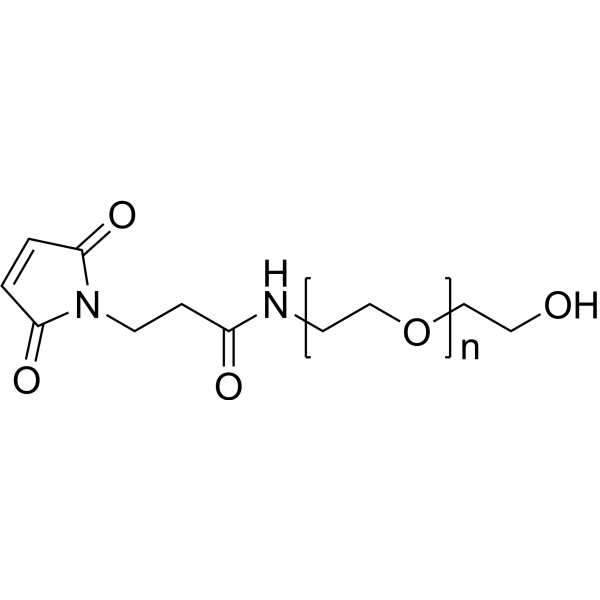
-
- HY-155902
-
|
Maleimide-PEG-Hydroxy (MW 5000)
|
Biochemical Assay Reagents
|
Others
|
|
Mal-PEG-OH (MW 5000) can be used as a macroinitiator to obtain amphiphilic diblock copolymers by ring-opening polymerization of LA. Nanoparticles prepared using amphiphilic block copolymers can form active drug delivery systems. Nanoparticles encapsulate Triptolide (HY-32735), which can avoid the disadvantage of Triptolide’s poor water solubility and reduce its toxicity.
|
-
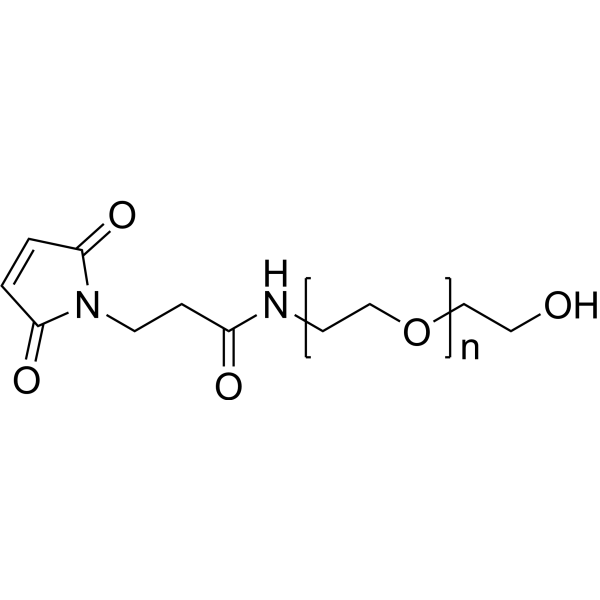
-
- HY-155902A
-
|
Maleimide-PEG-Hydroxy (MW 2000)
|
Biochemical Assay Reagents
|
Others
|
|
Mal-PEG-OH (MW 2000) can be used as a macroinitiator to obtain amphiphilic diblock copolymers by ring-opening polymerization of LA. Nanoparticles prepared using amphiphilic block copolymers can form active drug delivery systems. Nanoparticles encapsulate Triptolide (HY-32735), which can avoid the disadvantage of Triptolide’s poor water solubility and reduce its toxicity.
|
-
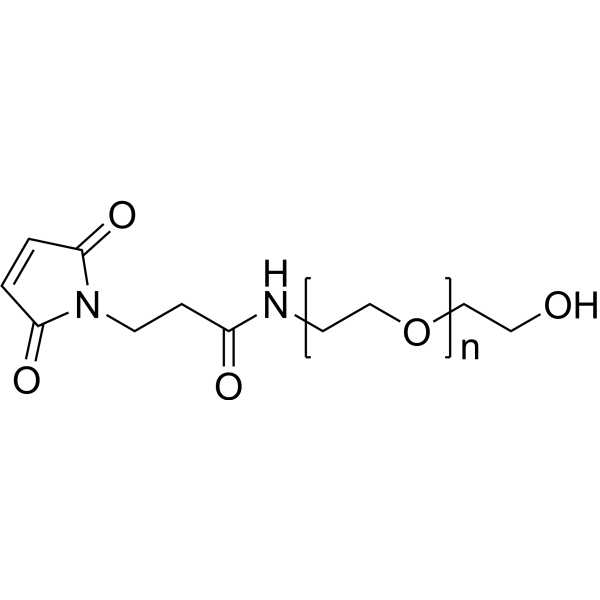
-
- HY-140696C
-
|
mPEG-Hydroxy (MW 20000); Polyethylene glycol monomethyl ether (MW 20000)
|
PROTAC Linkers
|
Cancer
|
|
m-PEG-OH (MW 20000) can be used as a macroinitiator to participate in the synthesis of amphiphilic block copolymers. Nanoscale micelles can be prepared by using amphiphilic block copolymers to deliver active drugs. Paclitaxel (HY-B0015), a hydrophobic anticancer agent encapsulated in micelles, has stronger activity in killing cancer cells than free Paclitaxel. And it preferentially accumulates in tumor tissue with only limited distribution in healthy organs.
|
-
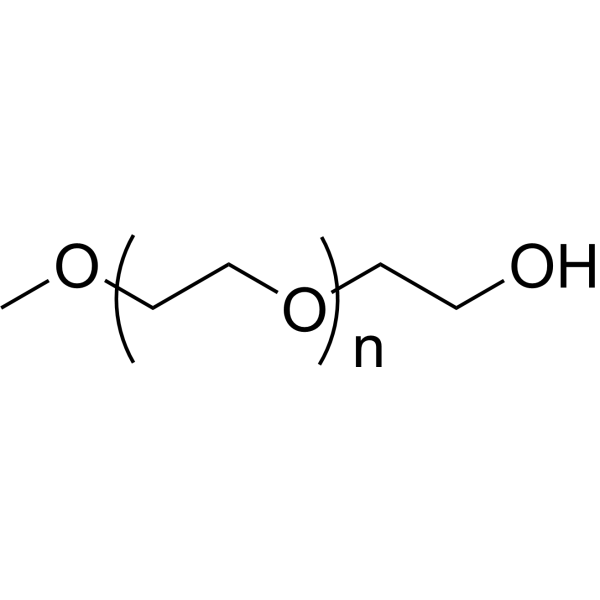
-
- HY-140696D
-
|
mPEG-Hydroxy (MW 10000); Polyethylene glycol monomethyl ether (MW 10000)
|
PROTAC Linkers
|
Cancer
|
|
m-PEG-OH (MW 10000) can be used as a macroinitiator to participate in the synthesis of amphiphilic block copolymers. Amphiphilic block copolymers can be used to prepare nanoscale micelles to deliver active drugs. Paclitaxel (HY-B0015), a hydrophobic anticancer agent encapsulated in micelles, has stronger activity in killing cancer cells than free Paclitaxel. And it preferentially accumulates in tumor tissue with only limited distribution in healthy organs.
|
-
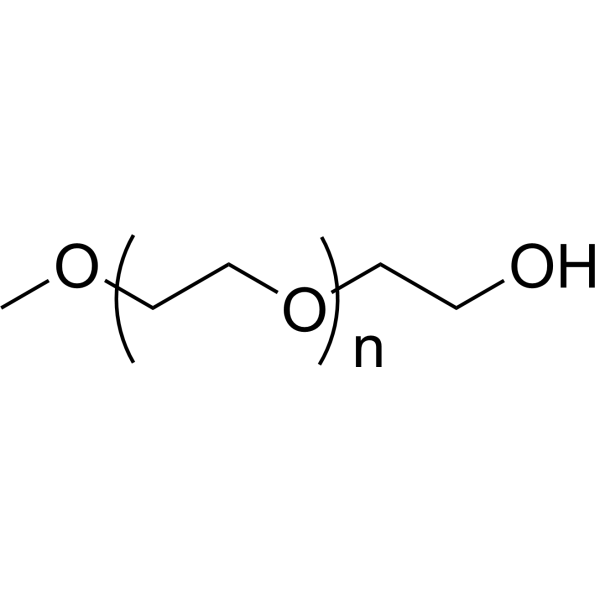
-
- HY-140696E
-
|
mPEG-Hydroxy (MW 1000); Polyethylene glycol monomethyl ether (MW 1000)
|
PROTAC Linkers
|
Cancer
|
|
m-PEG-OH (MW 1000) can be used as a macroinitiator to participate in the synthesis of amphiphilic block copolymers. Amphiphilic block copolymers can be used to prepare nanoscale micelles to deliver active drugs. Paclitaxel (HY-B0015), a hydrophobic anticancer agent encapsulated in micelles, has stronger cancer-killing activity than free Paclitaxel. And it accumulates preferentially in tumor tissues and has only limited distribution in healthy organs.
|
-
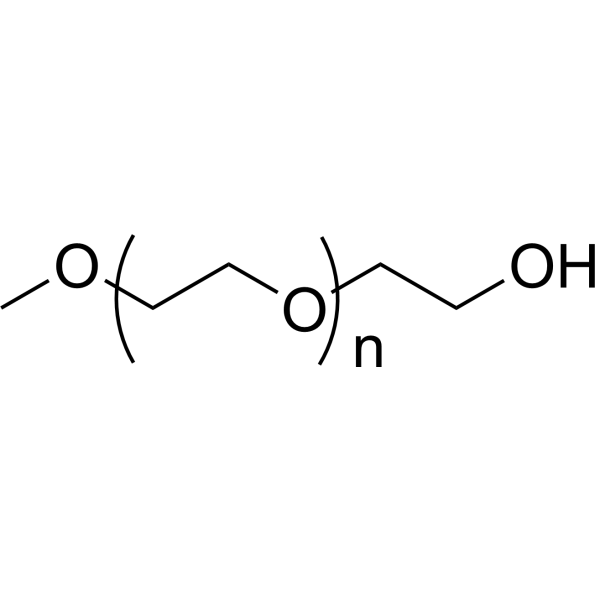
-
- HY-D1005H
-
|
PEG-PPG-PEG, 8400(Average Mn)
|
Fluorescent Dye
Biochemical Assay Reagents
|
Others
|
|
Poloxamer 188 is a nonionic linear copolymer with surfactant properties. Poloxamer 188 exhibits anti-thrombotic, anti-inflammatory, and cytoprotective activities in various tissue injury models .
|
-
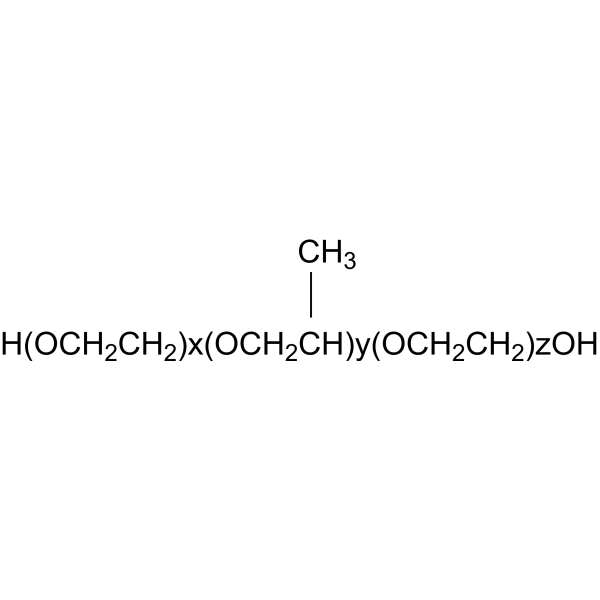
-
- HY-B2247
-
|
poly(lactic-co-glycolic acid) (50:50)
|
Biochemical Assay Reagents
|
Others
|
|
PLGA (50:50) (poly(lactic-co-glycolic acid) (50:50)) is a copolymer of poly lactic acid (PLA) and poly glycolic acid (PGA) which can be used to fabricate devices for drug delivery and tissue engineering applications.
|
-
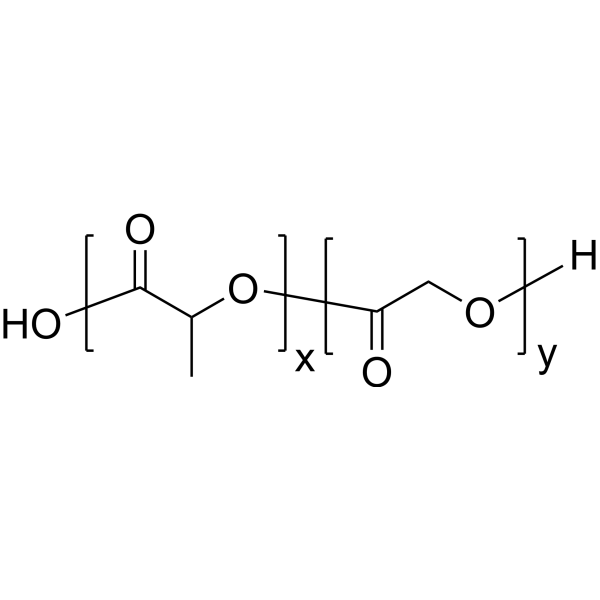
-
- HY-141540
-
|
|
Others
|
Others
|
|
Lactyl-CoA is an acyl-CoA formally condensed from the sulfhydryl group of CoA and the carboxyl group of lactic acid, also known as lactyl-CoA. Lactyl-CoA is essential for the biosynthesis of biodegradable and biocompatible lactic acid-based copolymers .
|
-
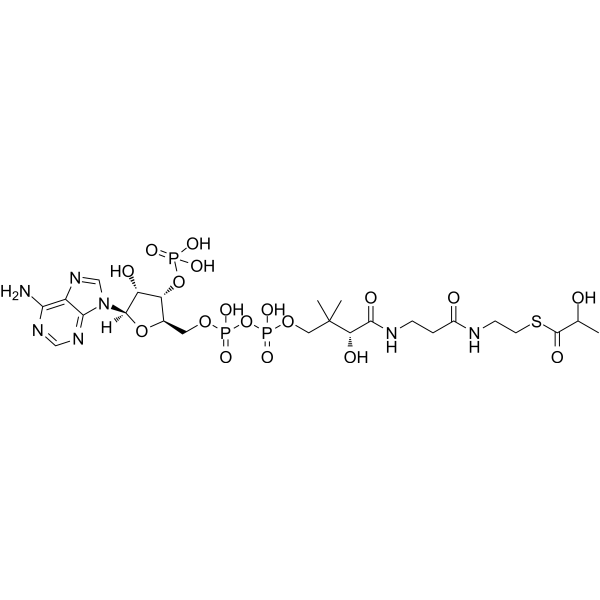
-
- HY-N7701
-
|
|
Fungal
|
Infection
|
|
L-Diguluronic acid is a linear polysaccharide copolymer composed of two L-guluronic acid (G) and can be used to from Alginate . Alginate is a generic name of unbranched polyanionic polysaccharides and can be used for the research of antifungal agents delivery carries .
|
-
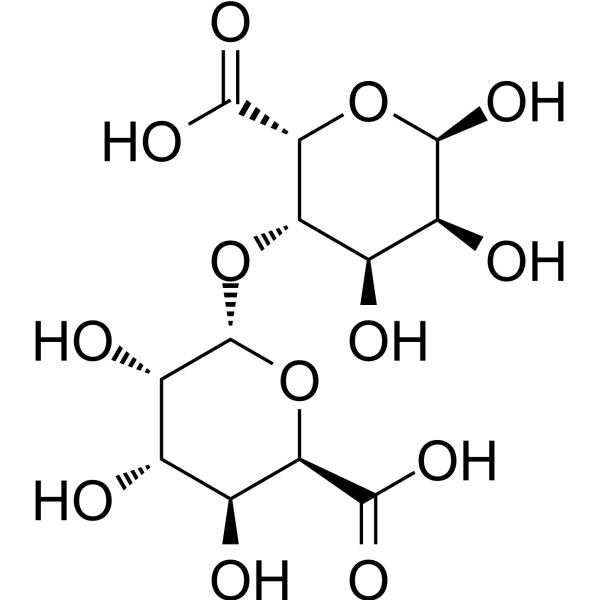
-
- HY-N7701A
-
|
|
Fungal
|
Infection
|
|
L-Triguluronic acid is a linear polysaccharide copolymer composed of three L-guluronic acid (G) and can be used to from Alginate . Alginate is a generic name of unbranched polyanionic polysaccharides and can be used for the research of anti-fungal agents delivery carries .
|
-
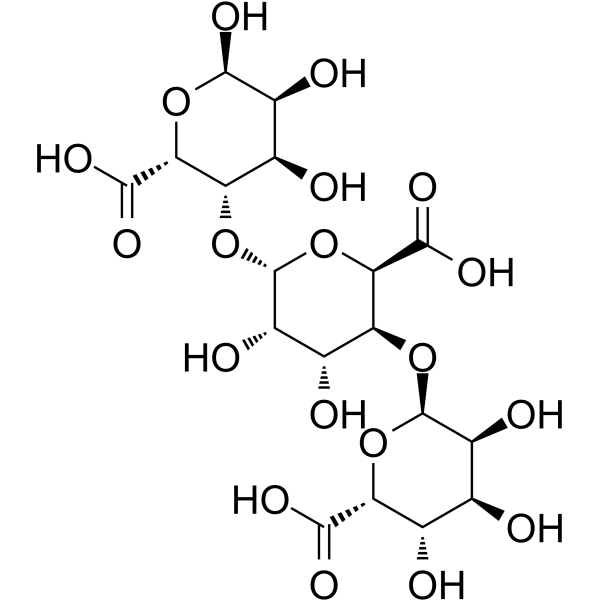
-
- HY-D1005A
-
|
PEG-PPG-PEG, 8800 (Average Mn)
|
Biochemical Assay Reagents
|
Inflammation/Immunology
|
|
Poloxamer 188 is a nonionic linear copolymer with surfactant properties. Poloxamer 188 exhibits anti-thrombotic, anti-inflammatory, and cytoprotective activities in various tissue injury models. Poloxamer 188 can be used for drug delivery .
|
-
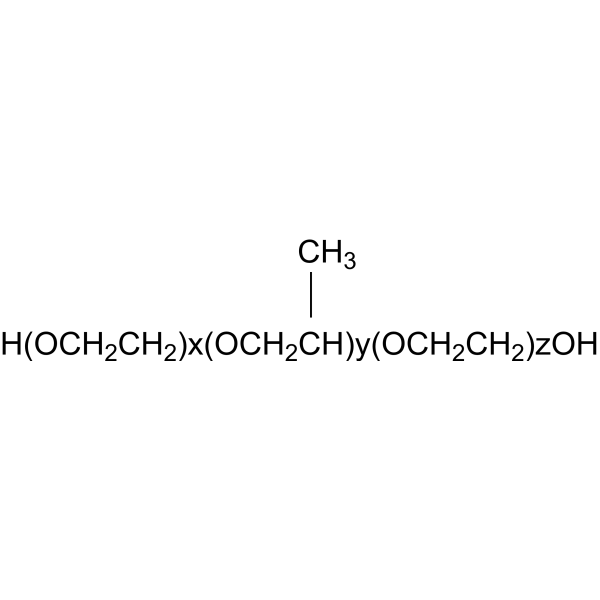
-
- HY-D1567
-
|
|
Fluorescent Dye
|
Others
|
|
Cy7.5 NHS ester is a fluorescent dye. Cy7.5 NHS ester can be conjugated to mPEG-b-PDPA to form a mPEG-b-PDPA-Cy7.5 fluorescent copolymer. Cy7.5 NHS ester can be used for fluorescent imaging study .
|
-
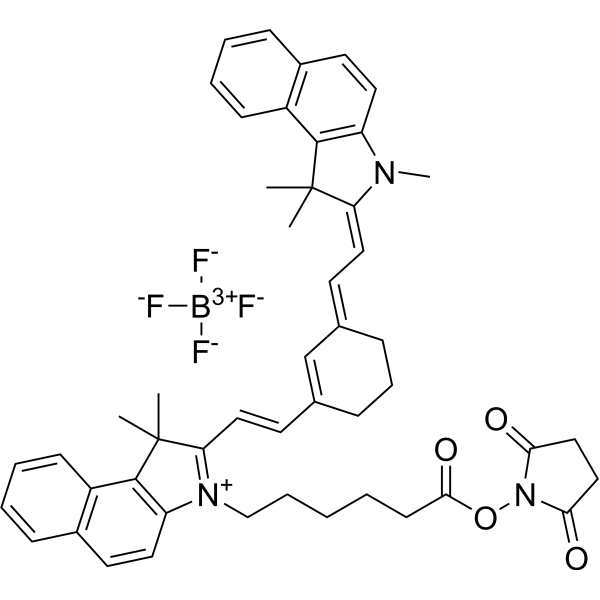
-
- HY-B2247A
-
|
poly(lactic-co-glycolic acid) (75:25)
|
Biochemical Assay Reagents
|
Others
|
|
PLGA (75:25) is a low toxicity, biocompatible and biodegradable controlled drug delivery carrier, can achieve slow release in the organism. PLGA (75:25) is a copolymer of 75% poly lactic acid (PLA) and 25% poly glycolic acid (PGA). PLGA (75:25) has been extensively studied as delivery vehicles for agents, proteins and various other macromolecules such as DNA, RNA and peptides .
|
-

-
- HY-D1005A24
-
|
PEG-PPG-PEG, 5000 (Averag)
|
Biochemical Assay Reagents
|
Others
|
|
Poloxamer 402 L122 (PEG-PPG-PEG, 5000 Averag) is a synthetic triblock copolymer of poly(ethylene oxide)-b-poly(propylene oxide)-b-poly(ethylene oxide) (PEO-PPO-PEO). Poloxamer 402 L122 forms thermoreversible gel, which remains fluid at room temperature but becomes more viscous gel at body temperature. Poloxamer 402 L122 is utilized in drug delivery, tissue regeneration and generation of micellar system .
|
-
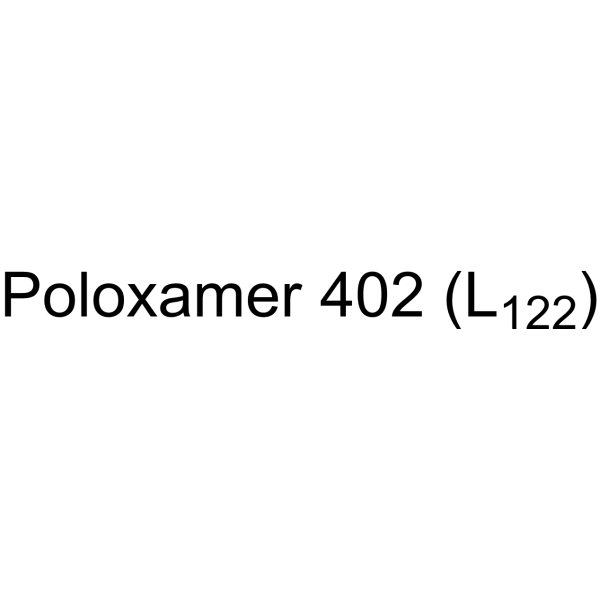
-
- HY-158231
-
|
F127DA
|
Biochemical Assay Reagents
|
Others
|
|
Polyether F127 Diacrylate (F127DA) is an acrylated triblock copolymer of polyethylene glycol-polypropylene glycol-polyethylene glycol. Polyether F127 Diacrylate rapidly cross-links and solidifies into a gel under the action of UV and visible light with photoinitiators. Polyether F127 Diacrylate has excellent thermogelling (heating gel) properties and good biosafety, and can be used in biomedical fields, such as drug carriers, wound dressings, cell carrier shear protectants, 3D printing, etc .
|
-
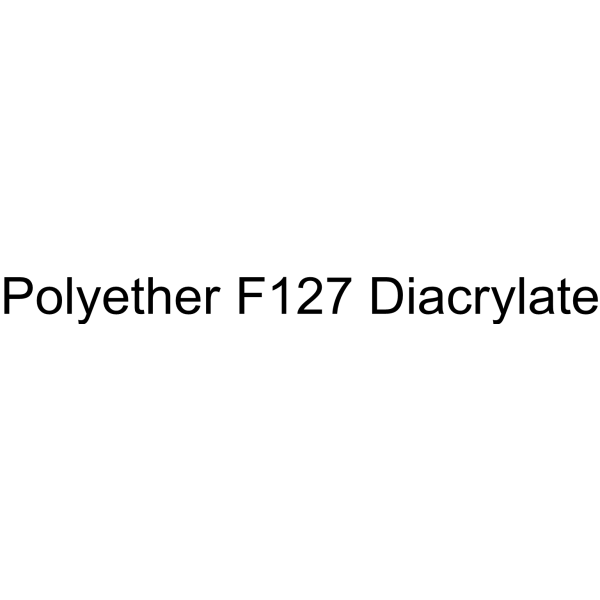
| Cat. No. |
Product Name |
Type |
-
- HY-D1567
-
|
|
Fluorescent Dyes/Probes
|
|
Cy7.5 NHS ester is a fluorescent dye. Cy7.5 NHS ester can be conjugated to mPEG-b-PDPA to form a mPEG-b-PDPA-Cy7.5 fluorescent copolymer. Cy7.5 NHS ester can be used for fluorescent imaging study .
|
| Cat. No. |
Product Name |
Type |
-
- HY-W250126
-
|
Poly(ethylene-co-vinyl acetate)
|
Biochemical Assay Reagents
|
|
Ethylene-vinyl acetate copolymer is a biochemical reagent that can be used as a biological material or organic compound for life science related research.
|
-
- HY-158083
-
|
|
Drug Delivery
|
|
Polymethacrylate Copolymer forms nanodiscs spontaneously by fragmentation or solubilization of the lipid bilayers.Polymethacrylate Copolymer is used in designing of nanodisc-forming polymer to mimic the amphiphilic nature of proteins and peptides .
|
-
- HY-155902B
-
|
Maleimide-PEG-Hydroxy (MW 1000)
|
Drug Delivery
|
|
Mal-PEG-OH (MW 1000) was used as a macroinitiator to obtain amphiphilic diblock copolymers by ring-opening polymerization of LA. Nanoparticles prepared using amphiphilic block copolymers can form active drug delivery systems. Nanoparticles encapsulate Triptolide (HY-32735), which can avoid the disadvantage of Triptolide’s poor water solubility and reduce its toxicity.
|
-
- HY-155902
-
|
Maleimide-PEG-Hydroxy (MW 5000)
|
Drug Delivery
|
|
Mal-PEG-OH (MW 5000) can be used as a macroinitiator to obtain amphiphilic diblock copolymers by ring-opening polymerization of LA. Nanoparticles prepared using amphiphilic block copolymers can form active drug delivery systems. Nanoparticles encapsulate Triptolide (HY-32735), which can avoid the disadvantage of Triptolide’s poor water solubility and reduce its toxicity.
|
-
- HY-155902A
-
|
Maleimide-PEG-Hydroxy (MW 2000)
|
Drug Delivery
|
|
Mal-PEG-OH (MW 2000) can be used as a macroinitiator to obtain amphiphilic diblock copolymers by ring-opening polymerization of LA. Nanoparticles prepared using amphiphilic block copolymers can form active drug delivery systems. Nanoparticles encapsulate Triptolide (HY-32735), which can avoid the disadvantage of Triptolide’s poor water solubility and reduce its toxicity.
|
-
- HY-140696C
-
|
mPEG-Hydroxy (MW 20000); Polyethylene glycol monomethyl ether (MW 20000)
|
Drug Delivery
|
|
m-PEG-OH (MW 20000) can be used as a macroinitiator to participate in the synthesis of amphiphilic block copolymers. Nanoscale micelles can be prepared by using amphiphilic block copolymers to deliver active drugs. Paclitaxel (HY-B0015), a hydrophobic anticancer agent encapsulated in micelles, has stronger activity in killing cancer cells than free Paclitaxel. And it preferentially accumulates in tumor tissue with only limited distribution in healthy organs.
|
-
- HY-140696D
-
|
mPEG-Hydroxy (MW 10000); Polyethylene glycol monomethyl ether (MW 10000)
|
Drug Delivery
|
|
m-PEG-OH (MW 10000) can be used as a macroinitiator to participate in the synthesis of amphiphilic block copolymers. Amphiphilic block copolymers can be used to prepare nanoscale micelles to deliver active drugs. Paclitaxel (HY-B0015), a hydrophobic anticancer agent encapsulated in micelles, has stronger activity in killing cancer cells than free Paclitaxel. And it preferentially accumulates in tumor tissue with only limited distribution in healthy organs.
|
-
- HY-140696E
-
|
mPEG-Hydroxy (MW 1000); Polyethylene glycol monomethyl ether (MW 1000)
|
Drug Delivery
|
|
m-PEG-OH (MW 1000) can be used as a macroinitiator to participate in the synthesis of amphiphilic block copolymers. Amphiphilic block copolymers can be used to prepare nanoscale micelles to deliver active drugs. Paclitaxel (HY-B0015), a hydrophobic anticancer agent encapsulated in micelles, has stronger cancer-killing activity than free Paclitaxel. And it accumulates preferentially in tumor tissues and has only limited distribution in healthy organs.
|
-
- HY-D1005H
-
|
PEG-PPG-PEG, 8400(Average Mn)
|
Biochemical Assay Reagents
|
|
Poloxamer 188 is a nonionic linear copolymer with surfactant properties. Poloxamer 188 exhibits anti-thrombotic, anti-inflammatory, and cytoprotective activities in various tissue injury models .
|
-
- HY-B2247
-
|
poly(lactic-co-glycolic acid) (50:50)
|
Drug Delivery
|
|
PLGA (50:50) (poly(lactic-co-glycolic acid) (50:50)) is a copolymer of poly lactic acid (PLA) and poly glycolic acid (PGA) which can be used to fabricate devices for drug delivery and tissue engineering applications.
|
-
- HY-D1005A
-
|
PEG-PPG-PEG, 8800 (Average Mn)
|
Biochemical Assay Reagents
|
|
Poloxamer 188 is a nonionic linear copolymer with surfactant properties. Poloxamer 188 exhibits anti-thrombotic, anti-inflammatory, and cytoprotective activities in various tissue injury models. Poloxamer 188 can be used for drug delivery .
|
-
- HY-D1005A24
-
|
PEG-PPG-PEG, 5000 (Averag)
|
Co-solvents
|
|
Poloxamer 402 L122 (PEG-PPG-PEG, 5000 Averag) is a synthetic triblock copolymer of poly(ethylene oxide)-b-poly(propylene oxide)-b-poly(ethylene oxide) (PEO-PPO-PEO). Poloxamer 402 L122 forms thermoreversible gel, which remains fluid at room temperature but becomes more viscous gel at body temperature. Poloxamer 402 L122 is utilized in drug delivery, tissue regeneration and generation of micellar system .
|
-
- HY-158231
-
|
F127DA
|
3D Bioprintig
|
|
Polyether F127 Diacrylate (F127DA) is an acrylated triblock copolymer of polyethylene glycol-polypropylene glycol-polyethylene glycol. Polyether F127 Diacrylate rapidly cross-links and solidifies into a gel under the action of UV and visible light with photoinitiators. Polyether F127 Diacrylate has excellent thermogelling (heating gel) properties and good biosafety, and can be used in biomedical fields, such as drug carriers, wound dressings, cell carrier shear protectants, 3D printing, etc .
|
| Cat. No. |
Product Name |
Category |
Target |
Chemical Structure |
Your information is safe with us. * Required Fields.
Inquiry Information
- Product Name:
- Cat. No.:
- Quantity:
- MCE Japan Authorized Agent:




































